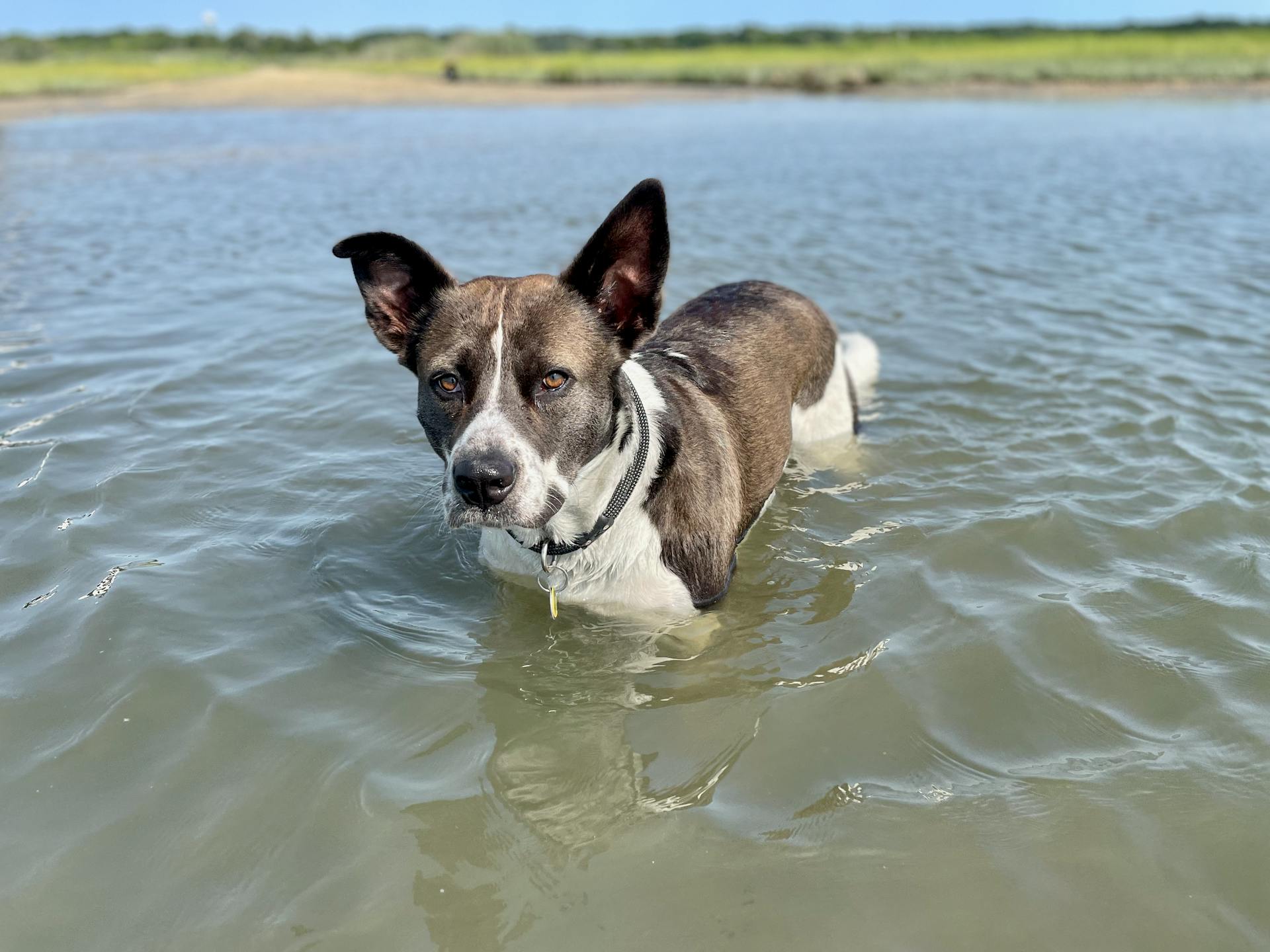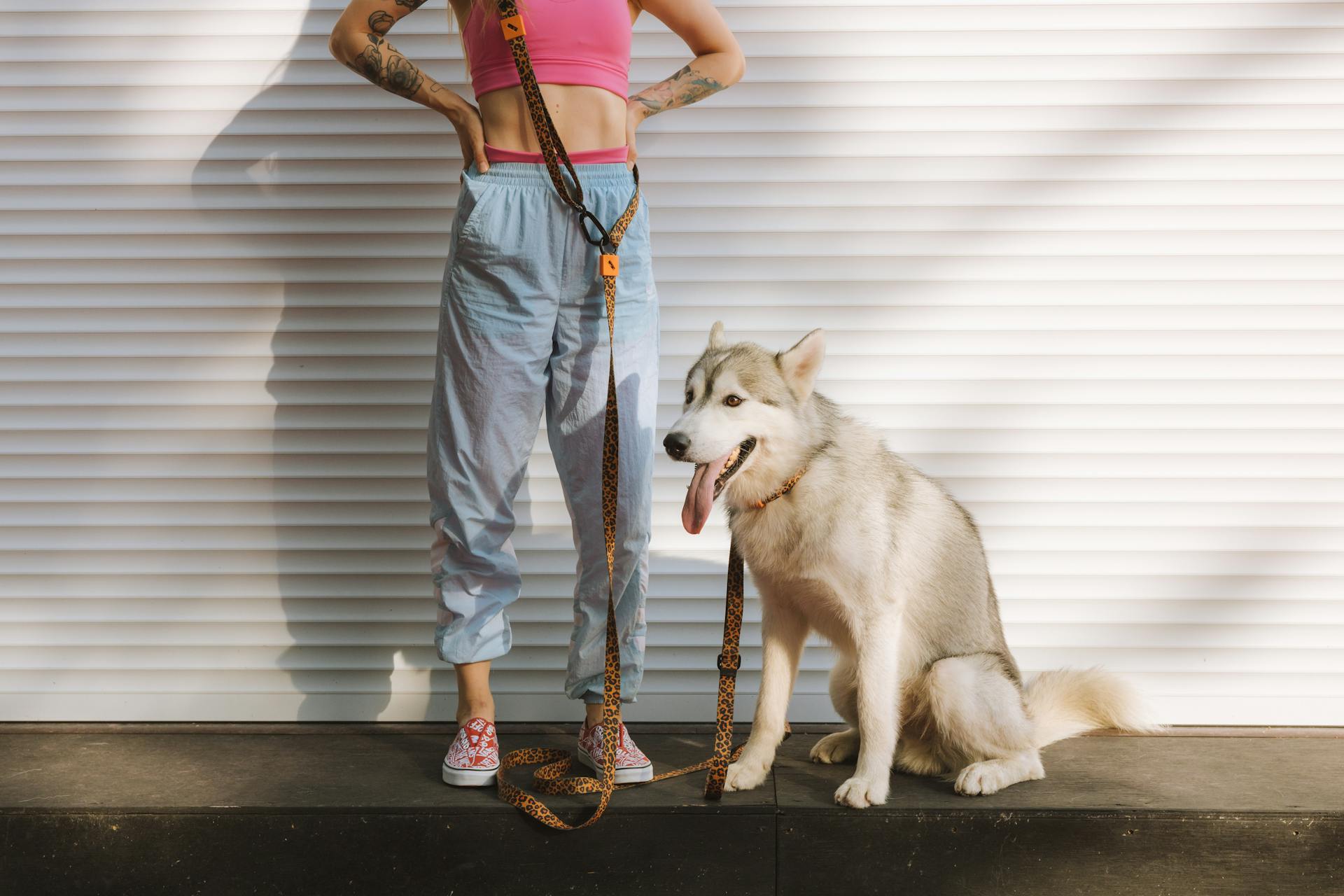
Hygroma is a common condition in dogs, particularly those with short, flat faces such as Pugs and Bulldogs. It's caused by a fluid-filled sac that forms under the skin, usually on the head or neck.
This condition is often associated with the dog's anatomy, particularly the shape and structure of their skull. Dogs with short, flat faces are more prone to hygroma due to the increased pressure on their skin.
Symptoms of hygroma can include swelling, redness, and pain around the affected area. In some cases, the fluid-filled sac can become infected, leading to more severe symptoms.
The prognosis for hygroma varies depending on the severity of the condition and the dog's overall health. If left untreated, hygroma can lead to further complications, such as infection or scarring.
What Is Hygroma?
Hygroma is a type of skin cyst that can affect dogs.
It's usually found on the neck or head area, and it's caused by a fluid-filled sac that forms under the skin.
A hygroma can be congenital, meaning it's present at birth, or it can develop later in life due to injury or trauma.
These cysts are typically filled with a clear or cloudy liquid and can be painful for the dog.
They can also become infected, leading to more serious health issues.
A hygroma can be diagnosed with a physical examination and imaging tests such as X-rays or an ultrasound.
In some cases, a biopsy may be necessary to confirm the diagnosis.
Treatment for a hygroma usually involves draining the cyst and removing any infected tissue.
In severe cases, surgery may be necessary to remove the cyst completely.
Preventing hygroma in dogs is not always possible, but keeping your dog's skin healthy with regular grooming and monitoring for any changes can help reduce the risk of developing a hygroma.
Causes and Risk Factors
Hygromas can be caused by minor trauma to the thin skin over a bony prominence, often due to frequent laying on hard surfaces.
This can lead to an inflammatory response in the tissue under the skin, causing the body to encapsulate the area with fluid to cushion the joint.
Dogs that lay down frequently on hard surfaces, such as hardwood floors or concrete, are more likely to develop hygromas.
Sedentariness following surgery is another common cause, as dogs in recovery have a limited range of motion and may not be able to move around as much.
Weakened joints, often found in older dogs, can also contribute to the development of hygromas.
Dogs with weakened joints may hit the ground quicker and with more force when laying down, causing trauma to the elbows.
Hygromas occur more commonly in large and giant breed dogs, such as German shepherds, Labradors, Great Danes, and mastiffs.
Here are some common causes of hygromas:
- Frequent laying on hard surfaces
- Sedentariness following surgery
- Weakened joints
Symptoms and Diagnosis
Hygromas in dogs can start as small, soft lumps on a dog's elbow, growing up to about 2 inches in diameter. These lumps are often painless at first, but can become infected if not treated.
Symptoms of an infected elbow hygroma may include fluid release, inflamed hair follicles around the growth, a warm to the touch lump, and a hard to the touch lump.
A hygroma can usually be diagnosed at home by examining the symptoms of your dog's growth, but a veterinarian can quickly diagnose it through a physical examination if needed.
Symptoms of Disease
A hygroma in your dog can start as a small, soft lump on their elbow that grows up to 2 inches in diameter.
In the early stages, the skin over the hygroma remains normal, but over time, it can become red, warm, and tender, especially if the hygroma becomes infected.
Your dog may not show any signs of illness or discomfort unless the hygroma becomes infected, at which point they may exhibit symptoms such as fluid release, inflamed hair follicles, and a hard or warm to the touch lump.
In some cases, the hygroma can become painful, leading to reluctance to lie down on the affected side, limping, or excessive licking of the area.
Initially, hygromas are usually not painful, which can sometimes lead to delayed detection as the dog may not show signs of discomfort.
Here are some common symptoms of a hygroma in dogs:
- Fluid release
- Inflamed hair follicles around the growth
- Warm to the touch
- Hard to the touch
Diagnosing and Treating
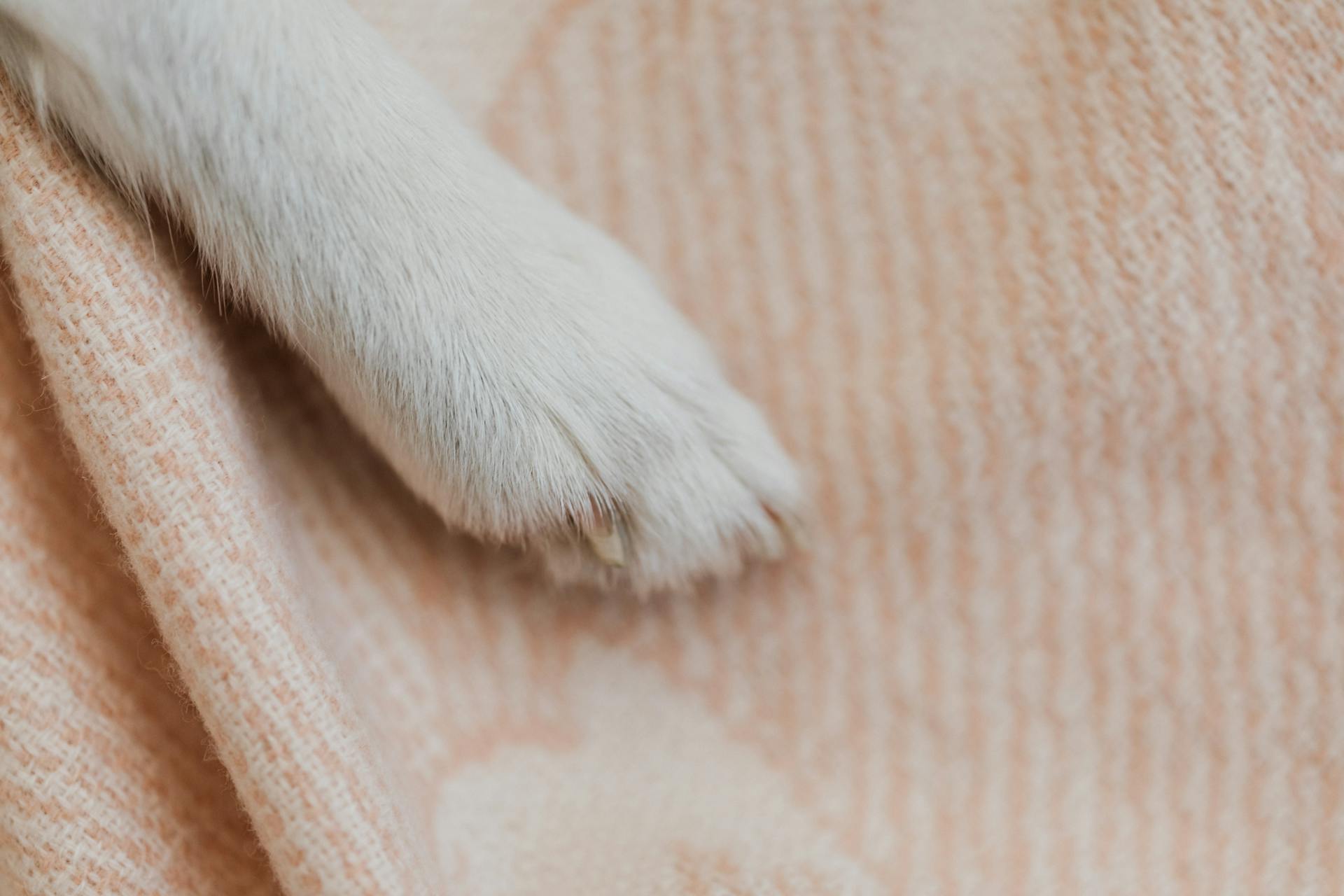
Diagnosing a hygroma in dogs is relatively straightforward. A veterinarian can usually diagnose a hygroma through a physical examination.
Your vet will want to rule out other conditions that may be causing your dog's lump, such as cancer. They'll examine the lump and take a complete medical history to determine the best course of action. If your vet believes your dog's lump is a hygroma, they'll likely recommend a physical exam to identify any underlying conditions that may be contributing to the hygroma.
Common health issues that may contribute to hygromas in dogs include arthritis, obesity and diabetes, heart disease, and hormonal disorders. If your vet identifies an underlying condition, they'll aim to treat that condition while you manage your dog's hygroma at home.
In most cases, hygromas can be diagnosed through a physical examination by a vet. However, in some cases, your vet may recommend laboratory testing with a needle aspirate of the skin to rule out other conditions.
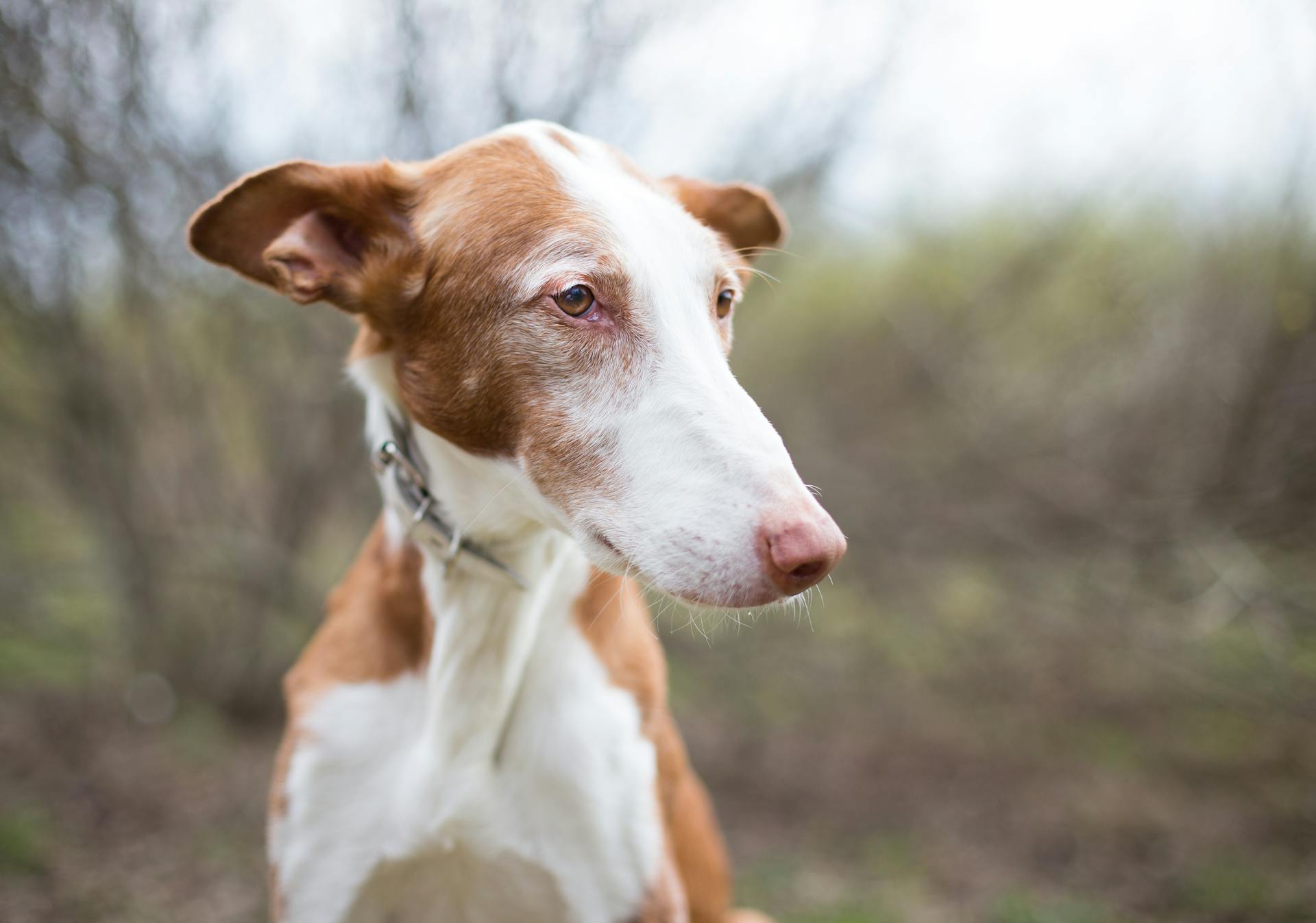
Here are some common symptoms of a hygroma in dogs:
- Fluid-filled lumps on bony areas, such as the elbows
- Lying down more often
- Sedentary behavior
If your vet diagnoses your dog with a hygroma, they'll recommend a treatment plan that may include providing cushioning for the affected area, adding soft bedding, or using elbow pads to prevent further irritation. In some cases, your vet may recommend surgical drainage or flushing to reduce the size of the lump.
Physical Characteristics
A noticeable swelling or lump is the most apparent symptom of hygroma, especially over bony areas like the elbow.
Hygromas are typically soft and fluid-filled.
The size of a hygroma can vary, from small and barely noticeable to quite large.
This variation in size depends on the duration and extent of pressure or trauma.
Treatment and Management
Catching a hygroma early is key to easy recovery. If your dog's hygroma is small and uncomplicated, it can be easily treated with soft, padded bedding and cold-laser therapy.
Adding cushioning to your dog's resting areas can help prevent the progression and abscessation of hygromas. You can use products like elbow pads, custom-made braces, or even a soft, plush bed to make the floor more comfortable for your dog.
If your dog's hygroma grows to a size that's not manageable through conservative treatment methods, draining the fluid or surgical removal may be necessary. However, this doesn't guarantee that the hygroma won't recur, so it's essential to increase padded and cushioned resting areas to prevent complications.
Early detection and management are crucial in preventing hygromas from becoming infected. By ensuring soft bedding and adequate padding over pressure points, you can help prevent further trauma and the development of hygromas.
Here are some home remedies to help manage hygromas at home:
- Apply a soft bandage or hygroma pad to the affected area
- Regularly check the hygroma for signs of infection or changes in size
- Consult your vet if you notice any worsening of the condition
The cost of treating a hygroma in dogs can vary widely depending on the severity and the chosen treatment method. It's essential to discuss the potential costs with your veterinarian to determine the best course of action for your dog.
Prevention and Prognosis
Prevention is key when it comes to hygromas in dogs. Providing your dog with soft bedding can prevent hygromas from forming in the first place.
If your dog doesn't like to use a dog bed, you can add padding or foam flooring to their resting spots or equip their elbows with wearable pads. Maintaining a healthy weight for your dog is also crucial in preventing hygromas, as excess weight can put more pressure on the bony prominence.
Hygromas can be prevented by cushioning your dog's impact and lessening the amount of pressure they put on their elbows, hocks, knees, and tails when they're sitting or lying down. Here are some ways to prevent hygromas in dogs:
- Adding blankets or bedding to crates where dogs may spend their time lounging around.
- Providing your dog with a comfortable bed where they can lie down throughout their day.
- Preventing your pet from becoming too sedentary by feeding them a nutritious diet and ensuring they get enough exercise.
- Not letting them lie down in the same position for too long to prevent putting too much pressure on those bony areas.
- Elbow protection to limit the impact on the elbow when your dog lies down.
- Limit crate time unless the crate is properly padded.
- Limit your dog's access to hard surfaces with a baby gate, or add foam flooring to hard floors where your dog spends their time.
Older dogs are at a higher risk of developing hygromas due to their sedentary lifestyle, but with the right precautions, hygromas can be prevented. Regular veterinary care and extra care from you can help ensure your dog stays comfortable and happy.
How to Prevent
Preventing hygromas in dogs is a straightforward process that requires some common sense and a few simple adjustments to their living environment. Providing your dog with soft bedding is the best way to prevent hygromas.
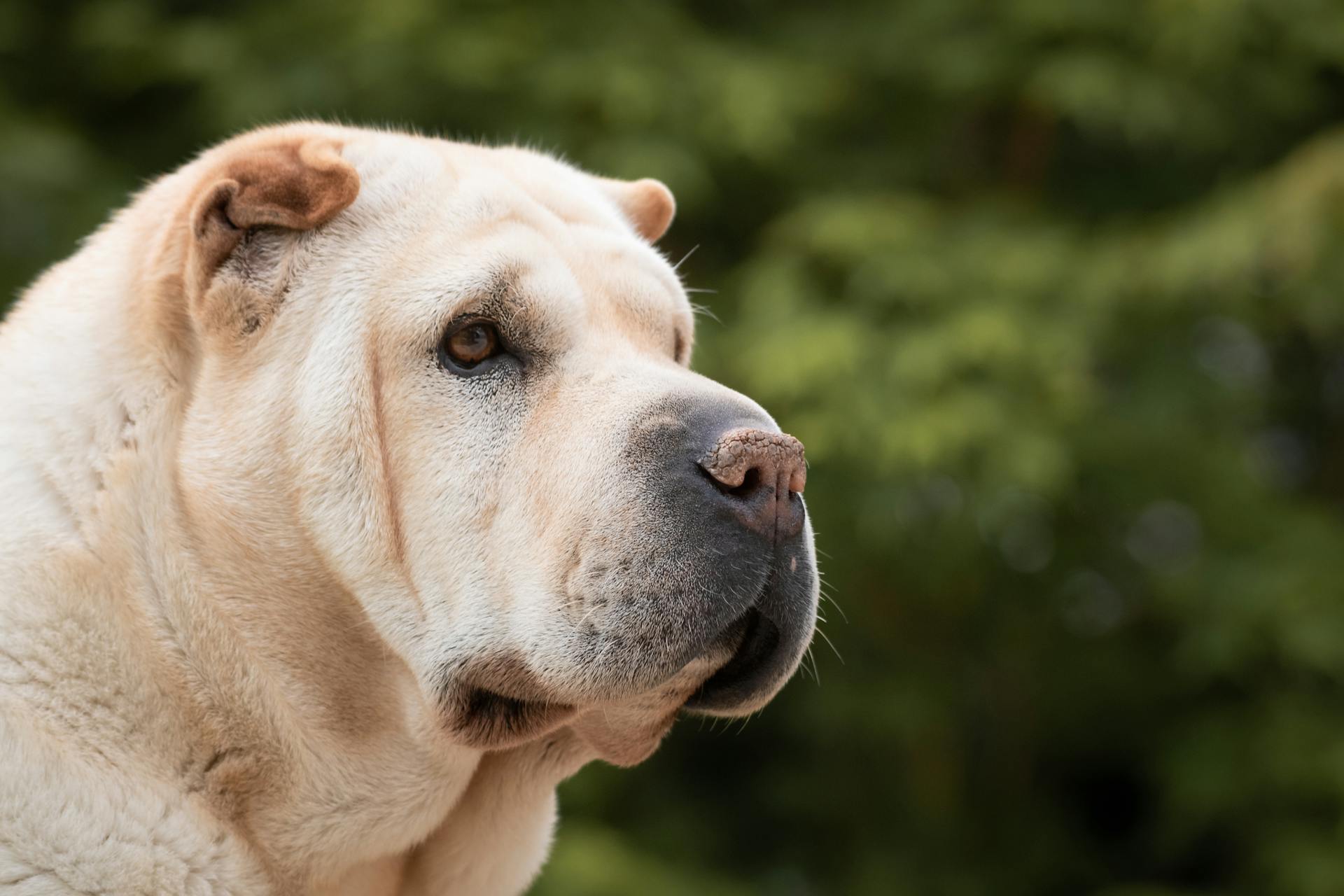
Maintaining a healthy weight for your dog is also crucial in preventing hygromas. If your dog is overweight, the pressure on the bony prominence will be more severe when contact is made with a hard surface.
To prevent hygromas, you can provide your dog with padded flooring tiles or interlocking tiles that they can lay on for comfort. These tiles are often used in gyms or daycare centers.
Hygromas are most common in dogs that spend the majority of their time sleeping or lying down on hard surfaces. Providing your dog with a comfortable bed where they can lie down throughout their day can help prevent hygromas.
You can also prevent hygromas by adding blankets or bedding to crates where dogs may spend their time lounging around. Limiting crate time unless the crate is properly padded can also help prevent hygromas.
Here are some ways to prevent hygromas in dogs:
- Provide a comfortable bed for your dog to lie down on.
- Add padding or foam flooring to hard floors where your dog spends their time.
- Limit your dog's access to hard surfaces with a baby gate.
- Keep your dog at a healthy weight to reduce pressure on their bony areas.
- Provide elbow protection to limit the impact on the elbow when your dog lies down.
Prognosis
Prognosis for dogs with hygromas is generally positive, especially when caught early. Hygromas are painless and can heal themselves in two to three weeks with proper care.
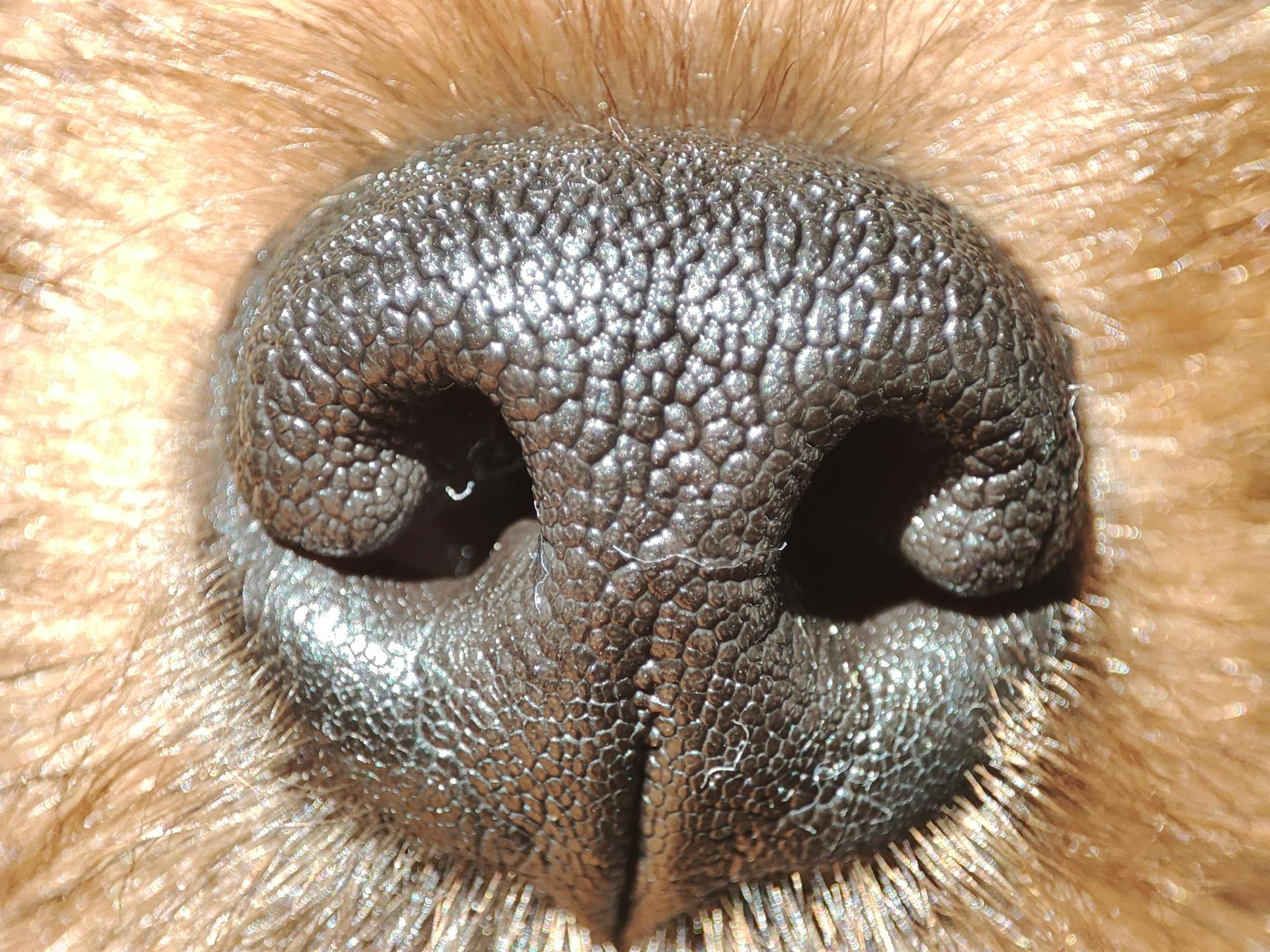
If left untreated, an infected hygroma can become reinfected during the healing process. This can be avoided with regular veterinary care and careful follow-up of treatment plans.
Dogs with hygromas can live long and happy lives with proper care and attention. Regular veterinary check-ups are crucial to ensure the hygroma doesn't worsen.
Preventing further trauma to the affected area is key to treating hygromas. Padding and protecting the hygroma can often be enough to prevent it from worsening.
With the right care and attention, it's possible to treat hygromas and prevent them from becoming a long-term issue.
Here's an interesting read: Canine Parvovirus Prevention
Frequently Asked Questions
What is a hygroma filled with?
A hygroma is filled with fluid, which accumulates in a dense-walled cavity due to inflammation. This fluid-filled sac can develop over bony prominences and pressure points in dogs.
Should you walk a dog with hygroma?
Yes, dogs with hygroma can still get plenty of exercise, but it's essential to choose gentle activities and monitor their elbows to prevent further injury. Consider activities like swimming, hiking, or gentle jogs to keep your dog active and healthy.
Featured Images: pexels.com

